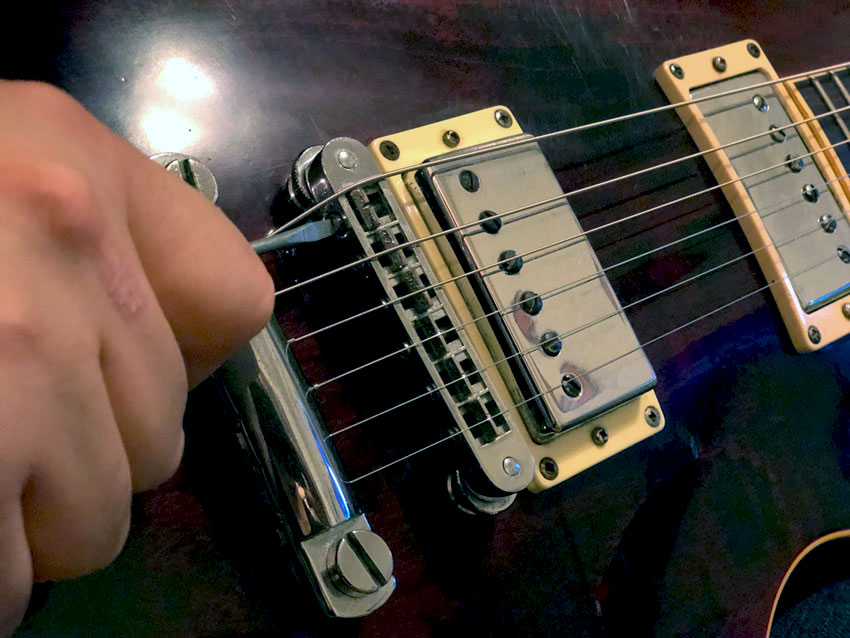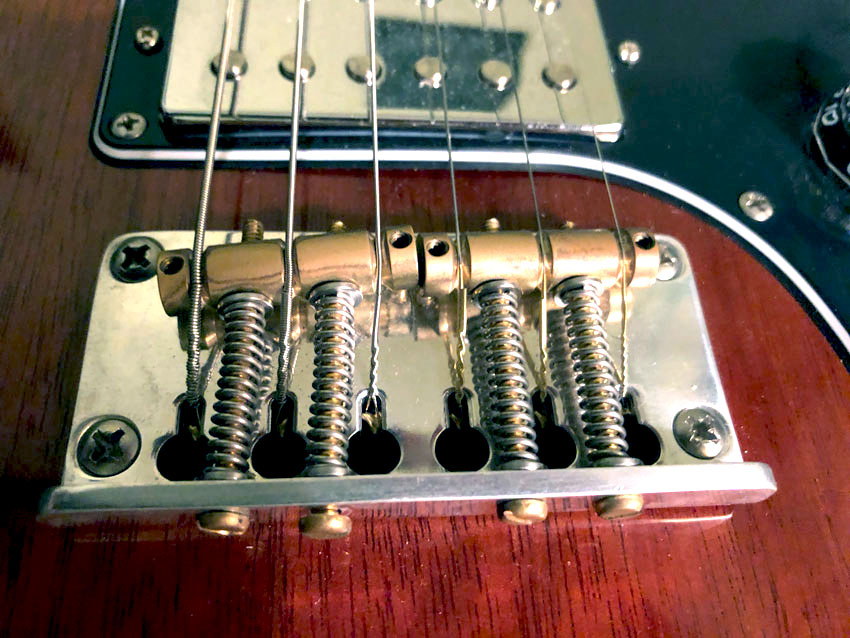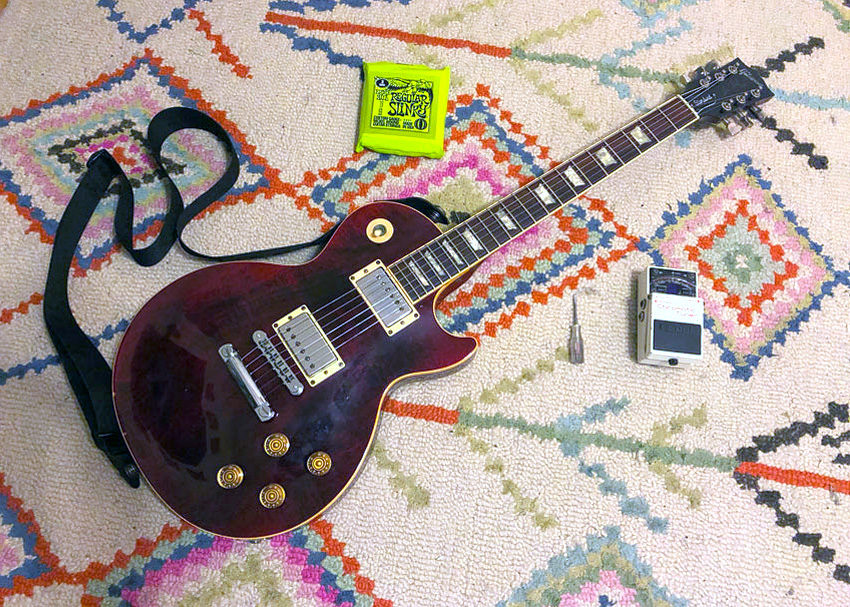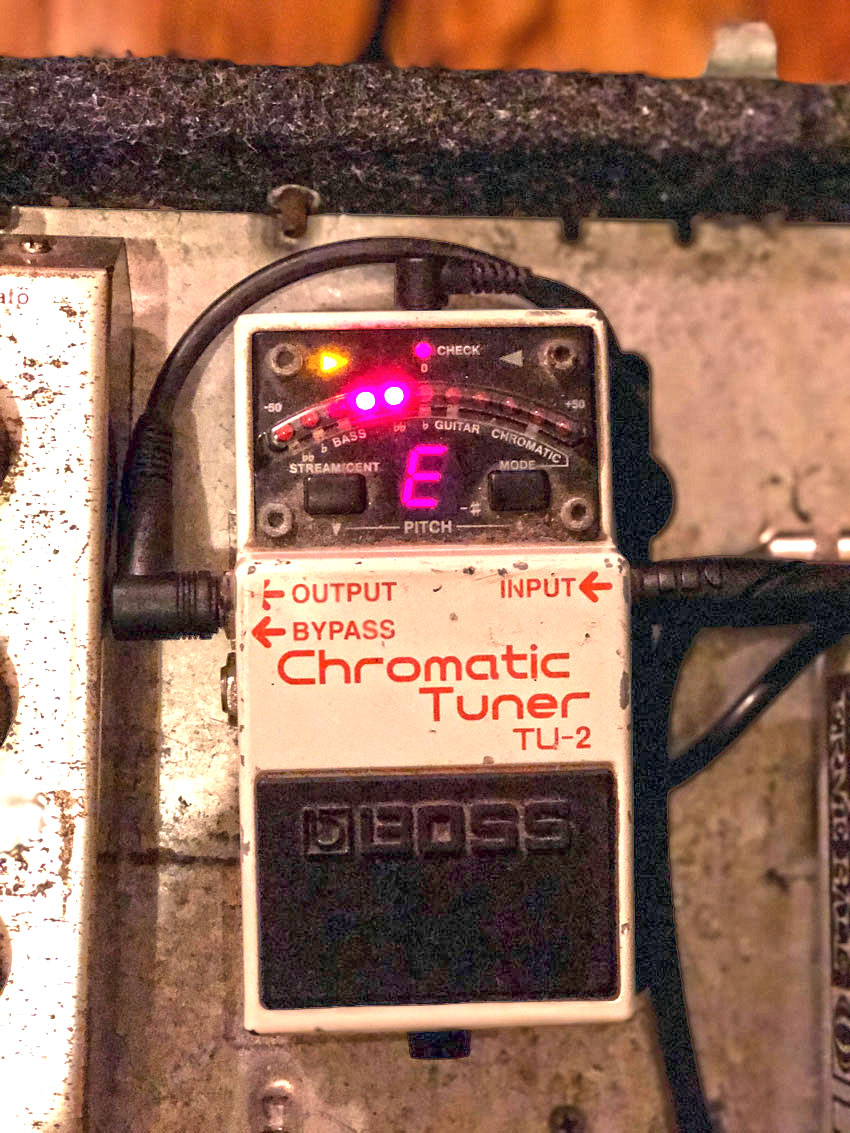Besides knowing how to change strings, knowing how to intonate your instrument is a skill most guitarists should learn. Keeping your guitar intonated keeps notes in tune throughout the length of the neck, with the pleasant side effect of making your guitar more enjoyable to play. Let’s face it, nobody wants to play a guitar that can’t stay in tune. The same sentiment also translates to guitars that go out of tune the further up the neck you play.
Although regularly scheduled setups done by professional luthiers or techs would be an ideal situation, most of us only take our guitars in to the shop when they really need some heavy-duty work done. In between these pro setups, however, guitarists should learn basic setup techniques, including intonation. Not only is it easy to do, but you’ll probably find yourself playing more often just because of how good your guitar sounds!
What is Intonation?
Intonation refers to the ability of the strings to produce the correct pitch regardless of your position along the fretboard. For example, say you tune your open low E string properly. If you play a B on the seventh fret and it sounds a little flat or sharp, then the intonation needs to be adjusted. While accurate intonation is important on all stringed instruments, it is especially important for guitars since they are often used to play chords. If any one of your 6 (or 7, or 8, or 9, etc.) strings isn’t intonated properly, your chords will sound out of tune. An accurately intonated guitar should sound in tune in any position on the fretboard, even well above the 12th fret.
How to Intonate Your Guitar
First, I recommend installing a fresh set of strings prior to checking intonation. I used a set of Ernie Ball Regular Slinkys for this example. New strings tend to hold tune better, unlike dirty and stretched out older strings. Since accurately checking intonation requires fresh strings, I tend to do a quick check every time I change them. If you keep up with intonation maintenance, then it won’t ever be a major task. Of course, if you adjust the truss rod, change string gauge, adjust the bridge/saddle height, or even undergo climate changes then you’ll almost certainly need to readjust your intonation.
Next, get your hands on a high-quality tuner. Intonation adjustment usually deals with changing the pitch of your strings by just a cent (or fractions of a cent) at a time. As a result, higher-accuracy tuners yield higher-accuracy intonation. The pros tend to use strobe tuners for their unprecedented accuracy, but as long as your tuner can read pitches to within a cent, then you should be good to go.
After you have installed your fresh strings, tune the strings to pitch with your tuner. Once all your strings are tuned up, the real process begins. Start by playing the 12th fret harmonic on one string and tune to pitch. Next, fret the 12th fret of the same string. We want these two pitches to be the same.

Adjust the saddle position according differences in pitch between the fretted and harmonic 12th fret tones.
If the fretted pitch is flat, you’ll need to shorten the string to make the fretted pitch sharper to get in tune. Using a small screwdriver, adjust the string’s bridge saddle so it moves toward the neck of the guitar. Keep in mind that you’ll most likely only need to make slight adjustments. If the fretted pitch is sharp, then the string needs to be lengthened. Use a screwdriver to move the saddle away from the neck of the guitar.
After making the appropriate adjustments, tune the string again with the 12th fret harmonic and re-check the fretted pitch. Depending on how out your intonation is, this process make take a few rounds of trial and error. Continue adjusting until both pitches are the same.
Something to keep in mind: guitars with individually adjustable saddles, like Gibson-style Tune-o-Matic bridges or Fender-style tremolo bridges, allow you to intonate each string separately. Guitars with barrel-style bridges, like traditional Fender Telecasters, may require slight compromise since multiple strings share a single barrel.

Bridges with barrel saddles, like the PRS plate-style bridge shown here, may require a hint of compromise.
Rinse and Repeat
Once you’ve finished intonating the first string, repeat the process for each string on your guitar. Afterwards, I typically recheck them all again starting with the string I completed first, making sure any micro pitch changes don’t require further adjustment.
Once completed, you should have an accurately intonated guitar in your hands! Play some chords up and down the neck to make sure they sound in tune. If anything sounds a little off, then (you guessed it) go back and make any further saddle adjustments. If you are still having issues with intonation, then you may have worn-out frets (an issue with older and/or heavily played guitars), or perhaps a problem with your nut. Any professional luthier or tech worth his or her salt should be able to easily take care of those issues.




